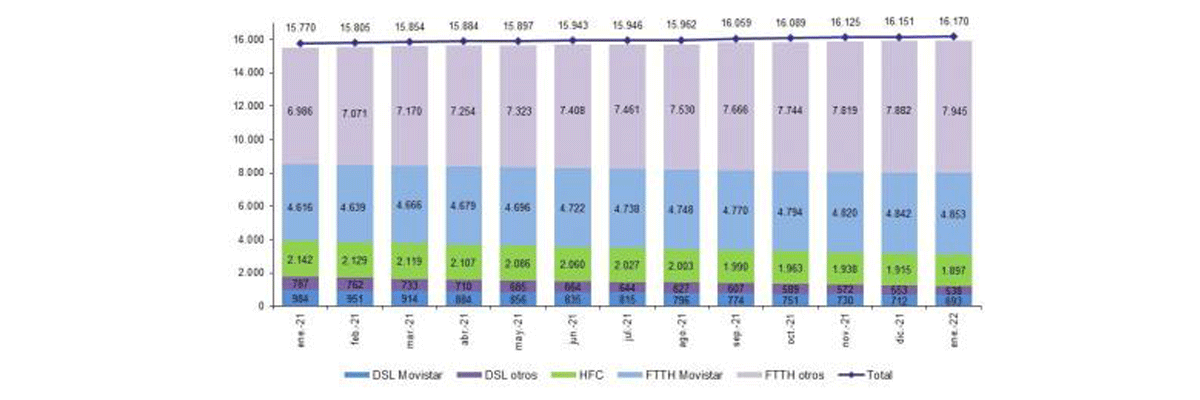The operator has divested part of its ADSL network in Spain to Australian infrastructure fund Macquarie for some €200 m. Macquarie aims to transition Telefónica’s copper network to fibre and lease this to third-party operators on a wholesale basis. Spain’s telecoms regulator, CNMC (Comision Nacional de los Mercados y la Competencia, National Commission for Markets and Competition) has expressed concerns that wholesale ADSL users might suddenly have no service. Telefónica has commented that CNMC’s preference for a slower shutdown may contribute to delaying migration to fibre services.
The company has quoted a hike in energy prices as a key driver for this acceleration. Some 85 % of Telefonica’s landline customers currently have access to fibre - that means 1.12 million residential users and 435,000 companies currently relying on copper still need to migrate. By closing its ADSL exchanges, Telefonica Spain would be able to monetise its real estate assets, many of which are located in city centres. Furthermore, the operator said it would be able to reach its environmental targets as an FTTH network consumes 85 % energy and requires less maintenance. Germany's leading broadband association, BREKO, has stated that copper networks consume up to 17 times more electricity than fibre optic networks. Germany's Environmental Agency (Umweltbundesamt) has stated that CO2 emissions per hour of video streaming for the fastest copper network is double that of FTTH. A study by the FTTH Council Europe shows that fibre optic networks emit 88% less greenhouse gases per gigabit than existing technologies.







